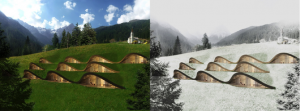In this text, the author is trying to analyse and conceive on the different habitats of Saint Jerome and is based on a series of paintings belonging to the renaissance period.
Saint Jerome habitats depict three allegorical capabilities which are-
The desert, The study, and The Grotto.
First being ‘The Desert’ in which the ideal habitat has been depicted where man has no support from sands/rocks. Man is relieved of responsibility and commits himself to a lone retreat by going to ‘Chalcian Desert’: “The Wilderness”.
The desert symbolises the nature – the wild. During that time he became one with the nature, he embraced it.
Second habitat ‘The Study’ man is no longer exposed but inside protected. There is a calmness depicted which indicates the World being at peace. In this habitat there is a desire for built order supported by civilized services.
In the paintings he is depicted in a cave with many books. After the desert, Jerome wanted to become part of a community as well as enjoy a closed environment without being exposed to weather phenomena – man-made. In the paintings he is depicted in a cave with many books. After the desert, Jerome wanted to become part of a community as well as enjoy a closed environment without being exposed to weather phenomena – man-made.
Third habitat ‘The Grotto’ is the combination of the above two extreme that is the ‘Idyll Nature’ and ‘Idyll Thoughts’. The grotto symbolises both the wild and the man made. It is the idyll environment to live. There is visual connectivity to the city at a distance and yet trying to maintain the peace and freshness of the nature by making the cave s his habitat. In the depiction he has bought his study to the cave, trying to strike the right balance between the two habitats.
In my opinion we might be able to create the ideal living condition which will benefit man and nature.
In conclusion, How architecture interacts with natural environment?
How does Architecture play a role in the human existence?

